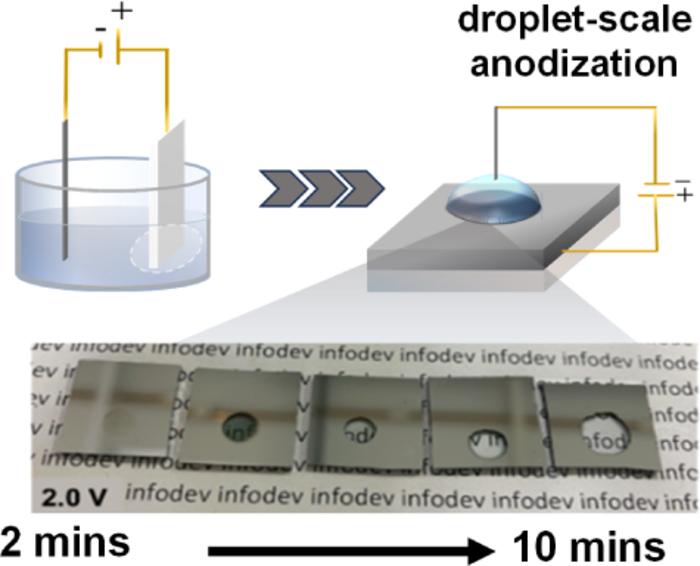
Transparent aluminum oxide (TAlOx) is a newly emerging material that has generated excitement in the fields of materials science and technology. Despite its name evoking imagery from futuristic sci-fi narratives, it possesses real-world applications that could be revolutionary for various industries. This remarkable substance is noted for its impressive hardness and scratch resistance, attributes that allow it to serve as an ideal protective coating for electronics, optical sensors, and solar panels. The allure of TAlOx extends even into popular culture, as seen in the legendary science fiction series “Star Trek,” where it is fictionalized as being integral to starship windows and spacefaring aquariums.
Traditionally, the manufacturing processes required to create TAlOx have posed significant challenges. Existing methods often rely on high-powered lasers, intricate vacuum chambers, or the use of hazardous chemical solutions, making them both costly and potentially dangerous. However, recent breakthroughs from researchers at Ateneo de Manila University and the Nara Institute of Science and Technology propose a transformative approach that may simplify and revolutionize this technology.
The innovation centers around a novel technique termed “droplet-scale anodization,” which employs microdroplets of acidic solution applied directly to the surface of aluminum. By introducing a controlled electric current—requiring only two volts of electricity, roughly equivalent to that in a standard AA battery—researchers have found a way to convert aluminum into the glass-like transparent aluminum oxide (TAlOx). This simplicity not only reduces costs but also enhances the feasibility of the process for widespread commercial application.
The environmental aspects of this new methodology cannot be overlooked. By minimizing the immersion of large metal sheets in extensive vats of acidic substance, this technique reduces chemical waste and energy consumption significantly. In particular, the reliance on controlled electrical processes illustrates a growing trend in materials science toward more sustainable manufacturing practices. The key mechanism underlying this transformation is electrowetting, an effect whereby an applied electric field alters the wettability of a liquid droplet, providing precise control over the anodization process.
As researchers delve deeper into the potential applications of this technique, they envision a future where TAlOx is not only more accessible but also far more affordable. Its potential use cases span a multitude of domains, including the creation of touchscreens with enhanced durability, optical lenses that are scratch resistant, and robust coatings for a variety of surfaces including vehicles and infrastructural elements. Further, the adaptability of this method opens doors for advances in the realm of miniaturized electronics, offering an avenue through which researchers can fabricate insulating, transparent layers on a microscopic level.
The research team’s findings contribute a crucial chapter to the ongoing narrative surrounding TAlOx. Published in the journal “Langmuir,” the work has been put forth by scholars including Marco Laurence M. Budlayan and Raphael A. Guerrero from Ateneo de Manila University, along with Juan Paolo S. Bermundo, James C. Solano, Mark D. Ilasin, and Yukiharu Uraoka from Japan’s Nara Institute of Science and Technology. This collaboration highlights not only the scientific importance of their findings but also the collaborative spirit that transcends geographical boundaries in advancing material sciences.
Moreover, the implications of this research extend beyond merely creating a new material; they promise transformative advancements in various sectors by offering solutions that balance performance with environmental responsibility. As industries demand smarter, more sustainable materials, TAlOx stands at the forefront of this new wave of innovation. Its potential to reshape the landscape of electronic devices and durable materials cannot be overstated.
The breakthrough research marks a pivotal moment in materials science, propelling TAlOx closer to commercial viability. Elements of control, simplicity, and sustainability are interwoven into the very fabric of this invoative method, and the future applications appear limitless. As the world becomes increasingly aware of environmental concerns and the need for sustainable practices, this research provides a glimmer of hope that advanced materials can be produced without compromising our ecological integrity.
In sum, the development of droplet-scale anodization for producing transparent aluminum oxide positions this remarkable material as a game-changer across numerous domains. As industries eagerly await the deployment of TAlOx in practical applications, the research community watches with bated breath to see how this innovative technology will unfold.
The duo of advancements in material science coupled with practical applications holds the potential to not only improve existing technologies but also to nurture novel inventions that leverage the unique properties of TAlOx. Enthusiasm for this new finding is palpable, as researchers and industry experts alike begin to visualize a multitude of uses. The groundwork has been laid, and it is sure to spur interest and investment in what could be one of the defining materials of the coming decade.
Through sustained research and collaboration, the promise of transparent aluminum oxide can be actualized, offering a window into a future where the boundaries of material capabilities expand, appealing to innovators and scientists alike. Yet, this journey is just beginning; the exploration of TAlOx has only scratched the surface of its vast potential, and as research continues, we can expect exciting developments that will shape the future of technology.
Subject of Research: Transparent Aluminum Oxide Manufacturing
Article Title: Droplet-Scale Conversion of Aluminum into Transparent Aluminum Oxide by Low-Voltage Anodization in an Electrowetting System
News Publication Date: 6-Jan-2025
Web References: Link to the journal article
References: Budlayan et al., 2025
Image Credits: Budlayan et al., 2025
Keywords
Transparent Aluminum Oxide, TAlOx, Materials Science, Anodization, Electrowetting, Sustainable Manufacturing, Nanotechnology, Electronics, Durability, Innovation, Environmental Responsibility.
Tags: Ateneo de Manila University researchdroplet-scale anodizationelectronic protection materialsFilipino scientific innovationinnovative manufacturing techniquesmaterials science breakthroughsoptical sensor advancementsscience fiction influence on technologyscratch-resistant coatingssustainable materials technologyTAlOx applicationstransparent aluminum oxide





